What is Polystyrene (PS)? Why do we make r-PS?
Polystyrene: Properties, Applications, and Environmental Considerations
Material Overview
Polystyrene is a versatile thermoplastic polymer characterized by:
- Exceptionally low density (0.96-1.04 g/cm³)
- Outstanding thermal insulation properties (conductivity: 0.033 W/m·K)
- High dimensional stability and moisture resistance
Primary Variants
1.Expanded Polystyrene (EPS):
- Cellular foam structure (98% air)
- Manufacturing process: Pennant-expanded beads molded with steam
- Density range: 15-30 kg/m³
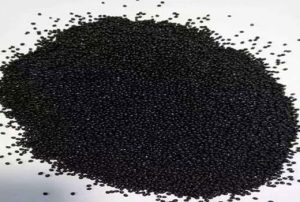
2.Solid Polystyrene:
- Continuous polymer matrix
- Higher mechanical strength (tensile strength: 40-60 MPa)
- Transparent to opaque optical
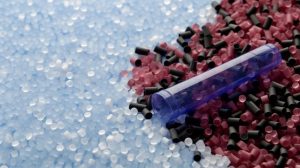
Environmental Challenges
While polystyrene delivers exceptional functional performance, its environmental persistence creates significant ecological concerns:
-
Persistence in Ecosystems:
- Degradation time frame: 500+ years in natural conditions
- Annual global production: 12 million metric tons (equivalent to 1.2 million garbage trucks)
-
Ecological Impacts:
- Marine pollution: Accounts for 15-30% of ocean plastic debris
- Wildlife hazards: 260+ species documented with polystyrene ingestion
- Micro-plastic generation: 1kg polystyrene → ~100,000 micro-plastic particles (<5mm)
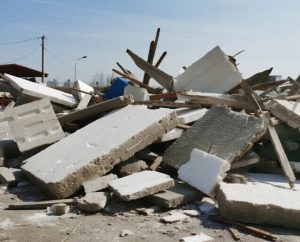
-
Waste Management Complexities:
Recycling rate: <10% globally due to:
- Low bulk density (transport inefficiency)
- Food contamination challenges
- Limited end-market applications
-
Current Mitigation Strategies
- Advanced recycling technologies (chemical, mechanical, thermal)
- Material substitution initiatives (bio-polymers, composite materials)
- Policy interventions (EU SUP Directive, local polystyrene bans)

R–PS Recycling: Processes and Technologies
Advancements in recycling technologies play a role in boosting the rates of polystyrene recycling and advancing towards a more sustainable circular economy. Recycling plastics mechanically entails cleaning the waste and then shredding it before melting it down to form new items which helps in conserving energy when compared to manufacturing the same products from scratch with raw materials.
R–PS Recycling Mode
Several methods are utilized in rPS recycling including compacting foam and pelletizing processes.
1.Compressed Foam
Polystyrene foam can be squished down to take up space and be transported more efficiently and affordably for recycling purposes.
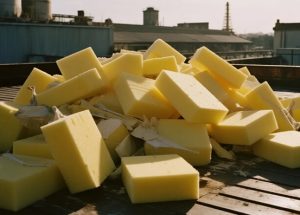
2.Pelletizing
The polystyrene is turned into small pellets that serve as the foundation for creating fresh items.
3.R-PS Pellets
R-PS pellets are an alternative to new plastic that can be used in different ways to help complete the recycling process.
4.Foam Trays
R-PS can be recycled into foam trays suitable for food packaging, demonstrating a practical application of recycled polystyrene.
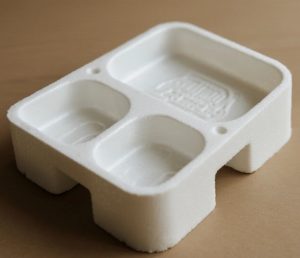
5.Foam Compressor
Foam compressors are beneficial in compacting waste to improve recycling efficiency and lower transportation expenses.
Energy Conservation in R-PS Production
When it comes to making polystyrene it uses a lot less energy compared to making new plastic from scratch. Recycled plastic can be melted down. Molded again without needing too much refining or purifying. This whole energy-saving process leads to a carbon footprint in the end.
Decreased Demand for Virgin Materials
By using recycled polystyrene of relying on oil and other fossil fuels. Which are major contributors to greenhouse gas emissions. The need for extracting these resources is lowered. This approach not only helps in addressing climate change but also encourages sustainable practices.

R–PS Contributes to a Circular Economy
Polystyrene recycling contributes to the economy by reusing materials instead of throwing them away. This method helps save resources cuts down landfill usage and lessens the footprint overall.
Applications of Recycled Polystyrene (r-PS) Pellets
Recycled PS pellets offer versatile material solutions across multiple industries due to their excellent process-ability and performance characteristics. Key applications include:
- Packaging Solutions
- Food-grade containers (meeting FDA/EFSA compliance)
- Protective packaging for fragile goods
- Industrial packaging components
- Building & Construction Materials
- Insulation boards (thermal conductivity: 0.032-0.038 W/m·K)
- Lightweight concrete additives
- Architectural moldings and decorative elements
- Consumer Products
- Electronics housings and components
- Stationery items and household goods
- Furniture components
- Industrial Applications
- Textile fibers (carpet backing, synthetic fabrics)
- Strapping materials (high tensile strength variants)
- Thin-film products
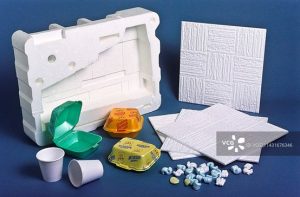
- Specialty Uses
- 3D printing filaments
- Composite material matrices
- Automotive interior components
Processing Methods:
✓ Injection molding ✓ Extrusion ✓ Thermoforming
With a typical melt flow index (MFI) range of 5-25 g/10min (200°C/5kg), r-PS pellets maintain performance comparable to virgin material while reducing carbon footprint by 60-70% in production.
This reformulation:
- Organizes applications by sector
- Adds technical specifications
- Highlights sustainability benefits
- Improves readability through bullet points
- Maintains professional tone for industrial readers
Would you like me to include specific case studies or performance data for any particular application?






